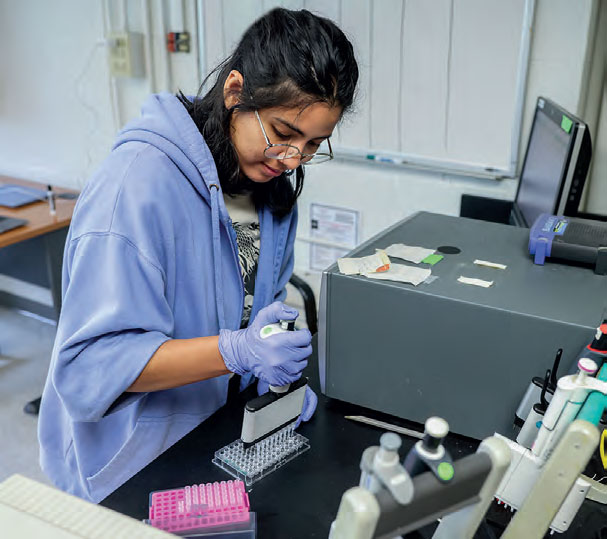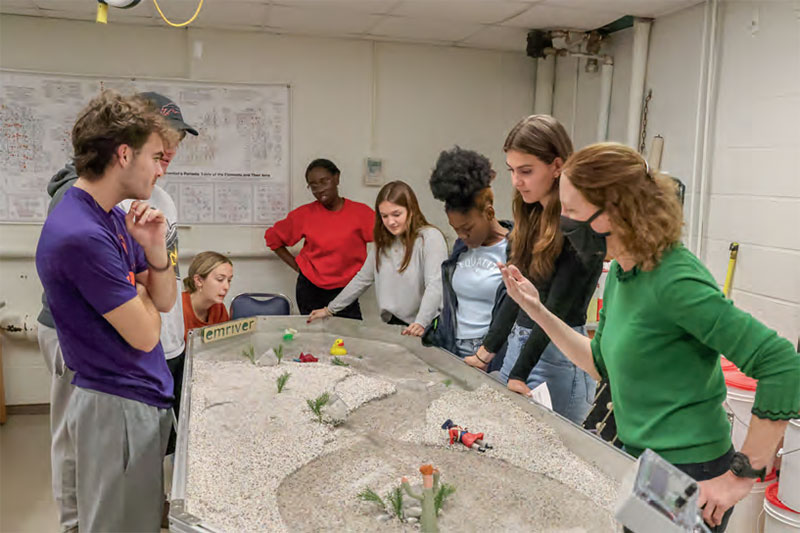The Pulteney StreetSurvey
UP CLOSE AND PERSONAL: NEW PERSPECTIVES ON STEM
Benchwork.

Genesis Rosario ’24 studies glutamate dehydrogenase, an enzyme that lies at the branch point of protein and sugar metabolism in the human body. Rosario is part of Associate Professor of Chemistry Kristin Slade’s research group, which uses chemical, analytical and biological techniques to learn about the implications of cellular “crowding” on aging and disease.
Model methods.

Using a stream table, Associate Professor of Geoscience Tara Curtin and students in her introductory hydrogeology course examine the features of aquatic landscapes and the processes that shape them. The interactive model offers a scaled-down, sped-up representation of natural processes, so that within a single lab period students can see how a stream or coastline would evolve over hundreds of thousands of years. Curtin studies global climate change and uses layered lake deposits to infer seasonal climate conditions in Western New York over the past 14,000 years. She also uses Finger Lake sediments to infer changes in environmental conditions in the lakes and their watersheds over the past 250 years.
A living lab.

At Castle Creek in Geneva, Sam Peeler ’26, Mason Fairfield ’26, Trevor Beatley ’26 and RJ Roseboro ’26 collect and categorize macroinvertebrates like mayflies and riffle beetles. The creek and other living laboratories are equally important for teaching and research. Director of Introductory Biology Laboratories Susan Flanders Cushman ’98, an aquatic biologist who studies stream and fish ecology with the Finger Lakes Institute, uses local ecosystems to engage her lab students in scientific practices — taking samples, analyzing data, writing up methodology and results — while establishing a concrete awareness of the region's habitats and the various factors shaping them.
